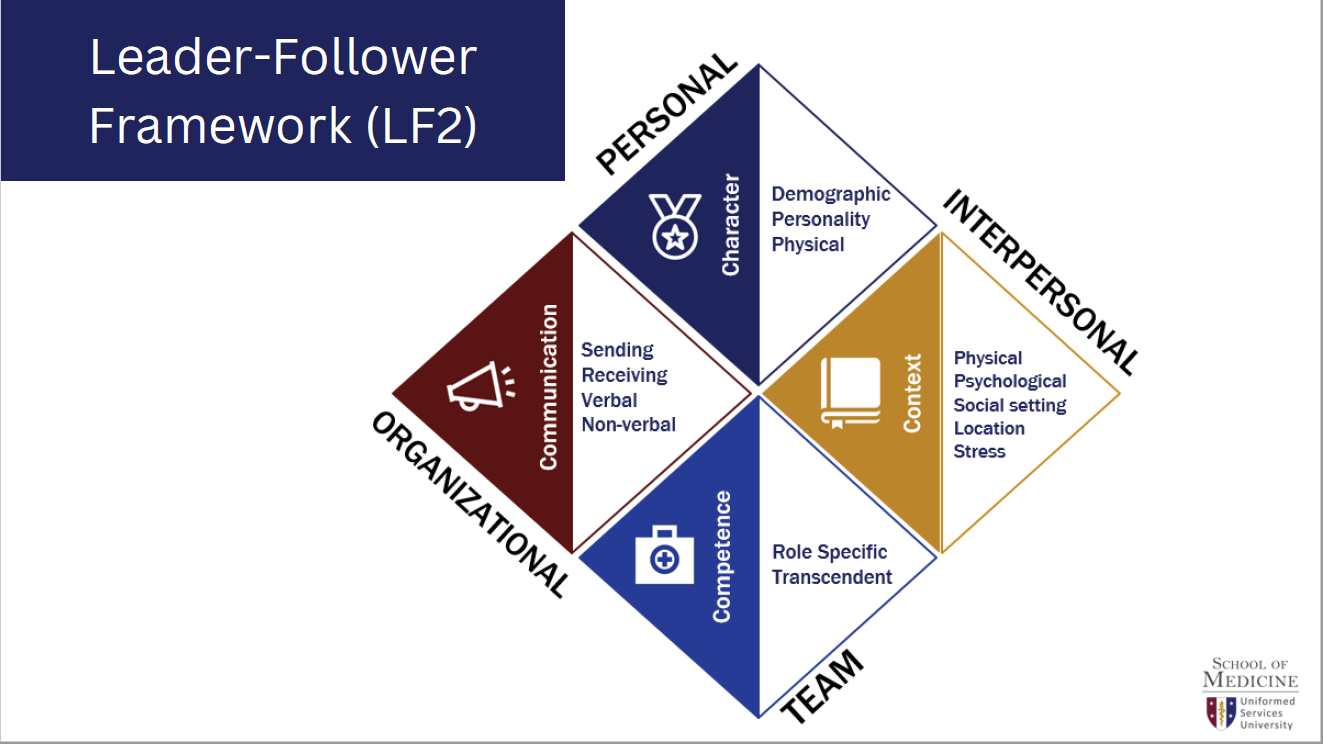Leader-Follower Framework
The conceptual framework, Leader-Follower Framework (LF2) used as the foundation for USU’s leadership education, applies to leaders and followers. Its qualities make it applicable across typical leadership “types” and focuses on the adaptive nature of leadership and followership in known and unknown environments.
Elements and interactions of the LF2 are below:
- Character (“Who” the leader is) refers to physical and psychological aspects of the individual (e.g., physical characteristics, appearance, demographics, attributes, personality, attitudes, beliefs, values).
- Competence (“What” the leader knows and does) refers to role-specific knowledge and skills and leadership transcendent skills (e.g., critical thinking, decision-making, problem solving, motivating others, conflict resolution, emotional intelligence).
- Context (“When” and “Where” leadership occurs) includes physical (e.g., time of day; climates; nutritional state, sleep, physical well-being), psychological (e.g., behavioral health), social (e.g., size and relationships within a group), and cultural (e.g., cultural values, practices, attitudes, beliefs) environments. This can also include inclusive leadership environments where a leader must be aware of additional factors that could hinder team trust and cohesion.
- Communication (“How” leaders interact with others) includes sending and receiving information, verbally (oral and written) and nonverbally (e.g., body language and facial expressions).
All four of the above occur across four psychosocial levels interaction - Personal, Interpersonal, Team, and Organizational
- Personal refers to psychological and biological aspects of the individual.
- Interpersonal refers to dyadic relationships and interactions.
- Team refers to a small group committed to common goals.
- Organizational refers to large groups, institutions, and systems.
Please see below for a graphic pertaining to the LF2 and the goal of educating adaptive leaders and committed professionals.

